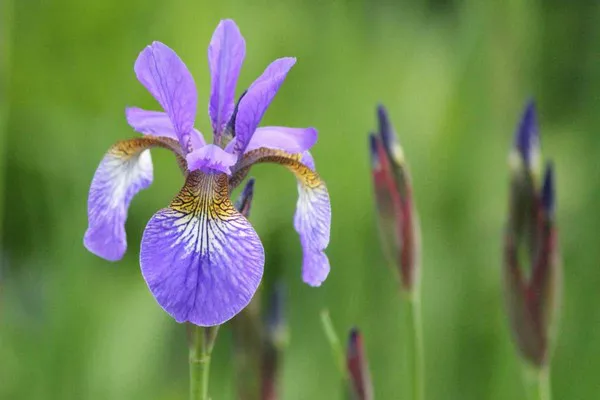Iris flowers, with their stunning array of colors and elegant blooms, are a favorite among gardeners and flower enthusiasts alike. These perennial plants have a unique blooming cycle that sets them apart from other flowers. Understanding the duration of their bloom and the factors influencing it can help enthusiasts cultivate thriving iris gardens. In this article, we will explore the intricacies of the iris blooming cycle, factors affecting their bloom duration, and tips for prolonging the flowering period.
1. Iris Flower Blooming Cycle
The blooming cycle of iris flowers is influenced by several factors, including the iris variety, environmental conditions, and geographic location. Typically, iris flowers bloom once a year, during specific seasons, depending on their classification as either bearded iris (Iris germanica) or Siberian iris (Iris sibirica).
2. Bearded Iris Blooming Duration
Bearded iris, one of the most popular varieties, generally bloom in the late spring to early summer, typically from May to June. The blooming duration for bearded iris is relatively short, lasting anywhere from one to three weeks. Within this period, each individual flower may last for only a few days, but the plant produces multiple buds that open sequentially, prolonging the overall display.
3. Siberian Iris Blooming Duration
Siberian iris, another beloved variety, typically bloom a bit later than bearded iris, often from early to mid-summer, typically from June to July. Unlike bearded iris, Siberian iris tends to have a slightly longer blooming duration. The flowering period for Siberian iris can last for approximately two to four weeks. Additionally, Siberian iris plants may produce more flowers per stem, adding to their visual appeal.
4. Factors Affecting Blooming Duration
Several factors play a significant role in determining how long iris flowers bloom. Understanding these factors can help gardeners optimize their bloom duration.
Environmental Conditions
Environmental conditions such as temperature, sunlight, and water availability have a substantial impact on the bloom duration of iris flowers. Adequate sunlight is essential for healthy flower development, and a lack of sunlight can result in reduced bloom time. Additionally, both excessive heat and cold can negatively affect the blooming duration. Proper watering, especially during dry spells, is crucial to support the plants and ensure they produce vibrant blooms for as long as possible.
Soil Quality
The quality of the soil is crucial for the growth and blooming of iris flowers. Well-draining soil with good fertility is ideal for these plants. Rich, loamy soil provides the necessary nutrients for robust growth and extended blooming periods.
Plant Health
The overall health of the iris plants directly impacts their blooming duration. Regular maintenance practices, including proper fertilization, pruning, and pest control, are vital to keeping the plants healthy and blooming optimally.
Geographic Location
Geographic location and climate significantly affect the bloom time of iris flowers. Different regions experience varying temperature and weather patterns, which can influence the timing and duration of the blooming season. Gardeners should be aware of their local climate and adapt their cultivation practices accordingly.
5. Prolonging the Blooming Period
Gardeners who wish to extend the blooming period of their iris flowers can employ several techniques to achieve this goal.
Succession Planting
Succession planting involves staggering the planting of iris bulbs or rhizomes at different times. By doing so, gardeners can ensure a continuous supply of iris blooms throughout the season.
Deadheading
Deadheading, the practice of removing spent flowers, is an effective way to encourage additional blooming. By removing faded blooms, the plant redirects its energy from seed production to forming new buds, resulting in prolonged flowering.
Regular Watering
Maintaining consistent and adequate watering, especially during dry spells, is crucial for extending the bloom time. Ensuring the plants are well-hydrated will support continuous flower production.
Mulching
Applying a layer of organic mulch around iris plants helps retain moisture, regulate soil temperature, and suppress weed growth. Mulching can aid in prolonging the blooming period by creating optimal conditions for the plants.
6. Iris Flowers and Pollinators
Apart from their aesthetic appeal, iris flowers play a vital role in supporting pollinators. Bees, butterflies, and other insects are attracted to the nectar-rich blooms, aiding in the pollination process and fostering biodiversity in the garden.
Conclusion
Iris flowers are captivating perennials cherished for their vibrant colors and unique beauty. Understanding the factors that influence their blooming duration allows gardeners to optimize their cultivation and enjoy extended periods of breathtaking blooms. By providing suitable environmental conditions, maintaining plant health, and implementing effective gardening practices, enthusiasts can ensure their iris gardens are a symphony of color and elegance throughout the blooming season. With proper care and attention, these magnificent flowers will continue to bring joy and wonder to gardens for years to come.


